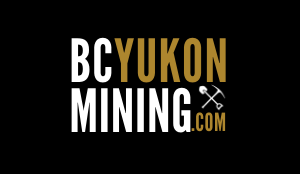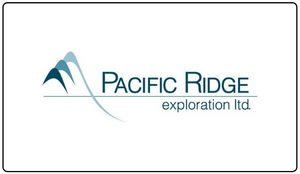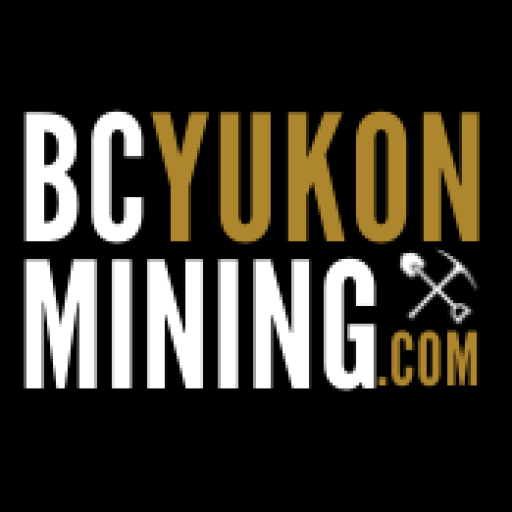By Paul Webster Special to the Star
Sat., Jan. 8, 2022timer7 min. read
When Andrew Ryeland, who lives on a lake in cottage country near Parry Sound, Ont., wrote to Canada’s telecommunications regulator in June 2020, he was motivated by years of struggle trying to get decent internet service at his rural home.
For that reason, he urged the Canadian Radio-television and Telecommunications Commission (CRTC) to grant an operating license to Starlink, the Los Angeles-based, low-orbit satellite internet company owned by billionaire business magnate Elon Musk, launched by his private aerospace company, SpaceX.
Unlike traditional phone companies that use ground-based fibre-optic cables to connect internet users, as well as cellular towers that beam internet signals, Starlink uses its own private satellites orbiting in space to beam internet signals to its Starlink dishes, making it ideal for remote communities.
“Starlink,” Ryeland wrote to the CRTC, “will provide rural Canadians a huge economic advantage as technology moves away from cities to the creativity and quality of life in our countrysides.”
Nine months after writing that letter, Starlink — which got its license to begin beaming satellite-based internet connections across Canada in October 2020 after an “unprecedented” 2,195 people petitioned forit, according to the CRTC — contacted Ryeland and asked him to register for its service.
“I immediately called six of my neighbours here on the lake,” he said. “And we all got it.”
So far, Canada’s market-dominating triad of internet providers — Bell, Rogers and Telus — have said little publicly about Starlink, which, according to its website, “enables video calls, online gaming, streaming and other high-data rate activities that historically have not been possible with satellite internet.”
/https://www.thestar.com/content/dam/thestar/business/2022/01/08/crazy-good-rural-canadians-are-raving-over-elon-musks-starlink-satellite-based-internet-service-should-canadas-big-telcos-be-worried/csc_starlink08.jpg)
But Gerry Wall, an Ottawa-based telecommunications economics consultant who tracks Canadian internet costs for Innovation, Science and Economic Development Canada, believes Starlink has become a threat to the country’s largest internet providers because of the speed and ease of access to its internet connections.
“If I was them, I’d be worried,” Wall said. According to Innovation, Science and Economic Development Canada, Canadian cellphone and internet costs are among the highest in the world.
Rogers did not respond to interview requests regarding Starlink, whose user-run Facebook group for Canadians boasts nearly 20,000 members.
Guy Gallant, spokesperson for the Canadian Wireless Telecommunications Association, an industry lobby group, also declined to discuss Starlink.
In an email, Telus emphasized its efforts to connect rural internet users in Western Canada but wouldn’t discuss Starlink.
“We respect all of our competitors and we’re always ready to compete in the markets we serve,” Jessica Benzinger, spokesperson for Bell, said in an email, while also declining to discuss Starlink.
In comments made during a conference call with market analysts and reporters in April, Mirko Bibic, CEO of Bell Canada, said Bell plans to eventually reach one million rural or remote households from Manitoba to Newfoundland using a non-satellite approach.
“And I stand that up against Starlink or other LEO (low Earth orbit) competitors any day,” Bibic added.https://misc.thestar.com/interactivegraphic/2022/01-january/05-starlink/index2.html
Dwayne Winseck,a Carleton University telecommunications industry analyst, said Starlink has already begun driving changes in the rural internet market, which is only served by a single provider in some regions.
“They’re making them sweat,” Winseck said about Starlink’s impact on the traditional providers.
Ben Klass, a telecom industry analyst affiliated with Carleton who is based in rural Manitoba and uses Starlink, agreed with Winseck, pointing to a Dec. 6, 2021, appeal to the CRTC from Northwestel, Bell’s Northwest Territories subsidiary, that said “we require the ability, on an urgent basis, to respond to the competitive threat that Starlink poses in the North.”
In an email, Northwestel said its “applications to reduce regulated consumer internet rates and provide faster internet speeds in Yukon, Northwest Territories and northern B.C. are still under consideration by the CRTC. We are hopeful to be able to provide these benefits to our northern customers soon.”
But for a growing number of rural Canadians, plugging into Starlink has made a world of difference, Klass said.
“Starlink is without doubt spurring competition in rural markets,” he said, while adding that Telesat Canada, an Ottawa-based company backed by $1.44-billion in federal support, is also aiming to enter the rural satellite-based internet market.
New Brunswick-based Xplornet had the early lead in this market, but Starlink has vastly superior satellite power and now seems set on market domination. Starlink’s satellite dishes can be purchased directly from the company and installed by users through a series of “easy” steps, according to its website. The service boasts roughly the same internet speeds as the big three traditional internet providers.
For $129 a month, Starlink delivers a “perfect signal” backed by “fantastic customer service for subscribers,” Ryeland said, and more bandwidth than he ever dreamed possible in his rural home.
“The satellite dish that they sent cost $699 plus tax. And it took me 10 minutes to install.”https://misc.thestar.com/interactivegraphic/2022/01-january/05-starlink/index.html
Thanks to Starlink, Ryeland said he’s been able to cut his cable TV and telephone service, as well as his previous internet service. As a result, he estimates he’s now saving roughly $300 a month.
Based on Ryeland’s experience, and more similarly favourable user feedback from across Canada, the prognosis for Starlink — which is currently offering its service on a “beta test” basis across Canada — seemspromising.
The results of a preliminary analysis of Starlink’s performance in eight Canadian provinces published on Dec. 20, 2021, by Speedtest Intelligence, a research service operated by Seattle-based Ookla, which describes itself as “the global leader in mobile and broadband network intelligence,” seem promising, too.
As of the end of September, Starlink’s median download speed decreased slightly to 84.55 Mbps while land-based broadband delivered mostly through fibre-optic cables increased to 90.67 Mbps.
“This is in line with what we expect to see on new technologies as additional users are added to a system,” the Speedtest analysis noted about Starlink’s slight decline in speed as more Canadians begin using the service. “Starlink is a viable alternative to fixed broadband in Canada, especially for consumers without access to other options.”
Starlink’s median download speed was faster than the median for all fixed broadband in Manitoba, Nova Scotia, Prince Edward Island, Quebec and Saskatchewan. Download speeds were comparable between Starlink and overall fixed broadband in New Brunswick, and overall fixed broadband was faster than Starlink in Alberta, British Columbia and Ontario.
But despite the accolades, Starlink may be handing local players an opportunity to catch up.
While the service was supposed to come out of beta and scale up quickly last fall, some Canadian customers who had preordered were left waiting for their dishes and modems to arrive. One potential subscriber who had their service scheduled to start in “late 2021” suddenly saw “late 2022” when they logged into their Starlink account.
In November, the company announced that chip shortages would cause delays.
“Silicon shortages over the last six months have slowed our expected production rate and impacted our ability to fulfil many Starlink orders this year,” an email to its waiting-list customers read. “We apologize for the delay and are working hard across our engineering, supply chain and production teams to improve and streamline our product and factory to increase our production rate.”
Isla McKetta, head of content for Ookla, said in an email that “servicing the entire population with connectivity is challenging” in Canada, because it’s a geographically large country with challenging terrain and low population density.
“Starlink offers an alternative and in some cases a significant improvement for Canadian consumers from both a price and performance perspective that are limited to (high orbit) satellite and fixed wireless 4G offerings,” McKetta said.
“Additionally, Starlink adds competition, which benefits consumers by giving them an additional provider to choose from and creating price pressures in the market,” she said.
In Richards Landing, Ont., about 100 kilometres from Sault Ste. Marie on the North Channel of Georgian Bay, Steve Sauve’s appeal to the CRTC last May also stressed “extremely high bills for low-quality service” with his rural internet provider.
Starlink, he wrote to the CRTC, “will encourage local telecoms to invest in better rural service to compete.”
Having now plugged into the Starlink service, Sauve said it “provides a fantastic unlimited service for a reasonable cost.”
This contrasts to “the Canadian telecom companies that offer internet services in my rural area,” he added, while bemoaning the large public subsidies currently being handed out to Canadian internet companies to induce them to extend rural service.
In Didsbury, Alta., geologist Kyle Chester — who, like Ryeland, also petitioned the CRTC to license Starlink — reported similar satisfaction with the satellite internet signal the company now provides to his rural home and office.
“So far it has been excellent. My download speeds have been five to 10 times faster, and the reliability and uptime have been another dramatic improvement,” he said in an email.
“The monthly cost is $130 and is a bit more than I’d like to pay for internet, but is a far greater value than the $75 I was paying before for substandard service.”
In 100 Mile House, B.C., graphic designer Dan Doucette, who also petitioned CRTC to license Starlink, summed up his experience in two words: “Crazy good.”
John Lawford, executive director and general counsel of the Public Interest Advocacy Centre in Ottawa, agreed with Wall that Canadian phone and internet charges are badly out of line with international comparisons.
But he doesn’t think Starlink is a game-changer in terms of costs.
“It won’t solve the affordability problem,” he said, noting that Starlink’s monthly costs are beyond reach for many low-income Canadian families.
Starlink officials in Los Angeles, Washington and New York did not respond to emails requesting information regarding its Canadian business plans.
At a satellite conference in Washington, D.C., in March 2020, however, SpaceX’s Musk said he doesn’t think Starlink threatens conventional internet providers — at least not in the U.S. where internet costs are lower than in Canada.
“I want to be clear, it’s not like Starlink is some huge threat to telcos,” Musk said.
“I think it will be actually helpful and take a significant load off the traditional telcos.”












